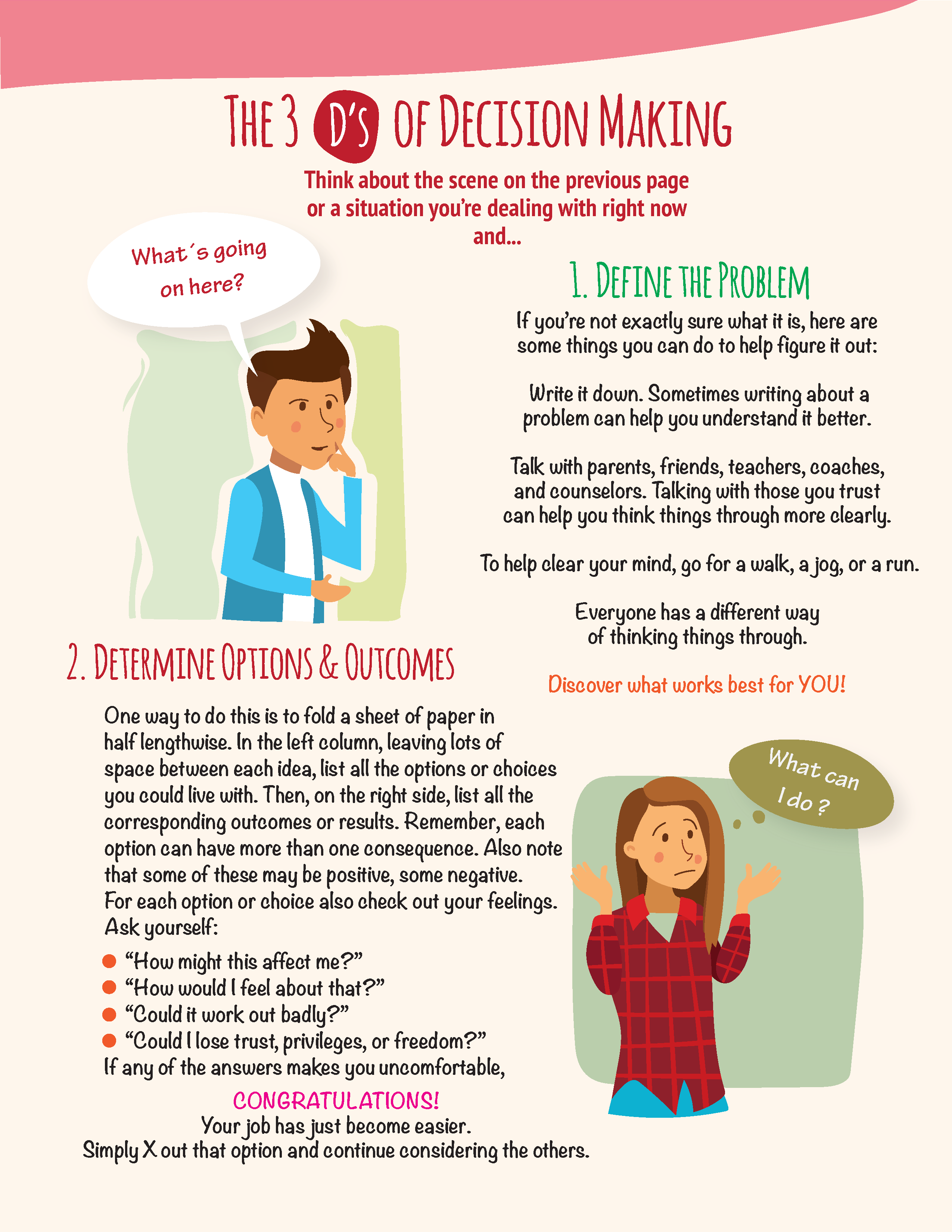
The 3 D'S OF DECISION MAKING
What's going on here?
Think about the scene on the previous page (or a situation you're dealing with right now) and....
1. DEFINE THE PROBLEM
If you're not exactly sure what it is, here are some things you can do to help figure it out:
Write it down. (Sometimes writing about a problem can help you understand it better.)
Talk with parents, friends, teachers, coaches and counselors. (Talking with those you trust can help you think things through more clearly.)
To help clear your mind, go for a walk, a jog, or a run.
Everyone has a different way of thinking things through.
Discover what works best for YOU!
What can I do?
2. DETERMINE OPTIONS & OUTCOMES
One way to do this is to fold a sheet of paper in half lengthwise. In the left column, leaving lots of space between each idea, list all the options or choices you could live with. Then, on the right side, list all the corresponding outcomes or results. Remember, each option can have more than one consequence. Also note that some of these may be positive, some negative. For each option or choice also check out your feelings. Ask yourself:
"How might this affect me?"
"How would I feel about that?"
"Could it work out badly?"
"Could I lose trust, privileges, or freedom?"
If any of the answers make you uncomfortable,
CONGRATULATIONS!
Your job has just become easier.
Simply X our that option and continue considering the others.
Lesson Progress
- Introduction to Decision Making
- The 3 D'S of decision making
- Decide, act, and evaluate
- Try the 3D's approach on these scenarios
- Peer Pressure
- How can peer pressure be positive?
- Negative Peer Pressure
- So what does this all mean ?
- How to handle negative peer pressure
- Other things to try
- How to be assertive and say no
- More ways to say no